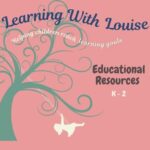By: Cindy Amos
Learning to use phonemes to build or spell new words can be very challenging to a child. What needs to happen in the manner of instruction for a child to begin putting sounds and letters together to make words ? First, children need to be able to use a letter symbol to spell a sound. This is called alphabetic principle or the ability to name the letters and their corresponding sounds. Once a child is being taught about letter sounds they should also be taught the letter name and how to write the symbol. Using only the most common letter sound until mastery then additional sounds can be added. So what’s next? Students must be taught using explicit phonics instruction for them to have the most growth.
One way I like to introduce blending to my students is through hands on activities during small groups. Omar & Axid stated that activities that are multisensory experiences enrich memory and help students to become skilled at spelling and reading skills principally when it involves two or more senses; visual, auditory, kinesthetic. Using the resource linked below to teach how to blend words I begin with sounds only. The first time I use this with students they use a playdough ball of the same color as the square. As we say the sound they smash the playdough. Then, after a few days of practicing using only sounds we move to adding letters. Remember the repetition is your and your students friend. Building automaticity of letters, sounds and how to blend sounds and letters helps to build fluency for later reading. After they press the playdough the student tries to write the correct letter that makes the sound or pulls the correct letter tile down. Then together we sound out the letter sounds as they are touching the letters. I have a set of resources in front of me also to model the procedure for them. Repeat this with the students several times with additional words. Once I feel confident they are ready to try this on their own, I ask them to blend a new word and observe their actions and what they say. From this data, I continue to adjust their practice activities in difficulty by what they have been able to complete during the group work time. Working with letters and sounds is a researched-based practice that has shown to be most beneficial to Phonological Awareness (Webber et al, 2023). I have this set linked here: Blending Practice
If students are having difficulty with blending, continue practicing. Practice will improve the understanding for struggling readers (Webber et al, 2023). If you feel your student needs additional help refer them for additional tier three RTI help before suggesting testing. Some students just need more practice to comprehend this really challenging skill. If after additional help the student is not making progress, they may need more intense interventions.
References
Omar, M. & Azid, N., (2020). The effectiveness of CVC arm tapping interactive application towards year two students’ English language achievement, Universal Journal of Educational Research, 8(12),6517-6526.
Webber, C., Patel, H., Cunningham, A., Fox, A., Vousden, J., Castles, A., Shapiro, L. (2023)An experimental comparison of additional training in phoneme awareness, letter sound knowledge, and decoding for struggling beginning readers, British Journal of Educational Psychology, 94(1), 282-305
